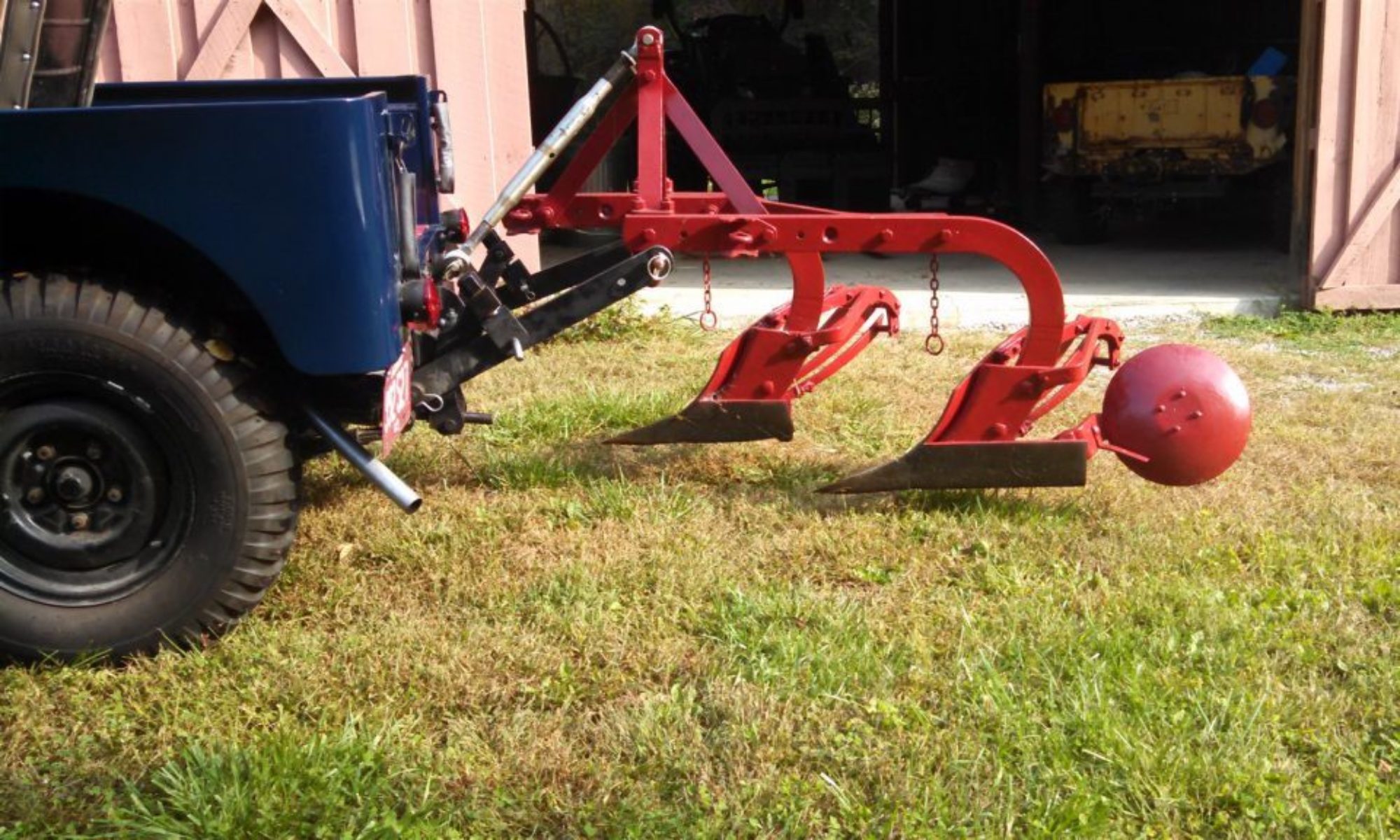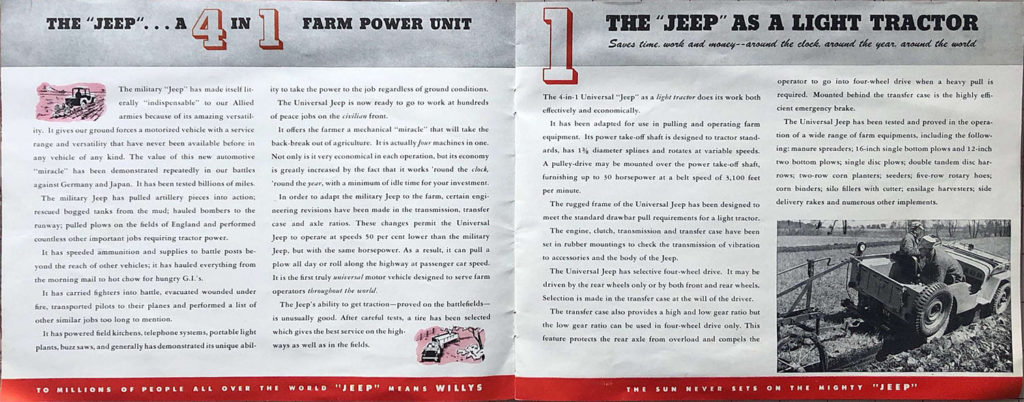
In the fall of 1944, Willys produced a document that would be the definitive statement on the post-war jeep. Titled “Jeep Planning,” the brochure outlines the “Peace Jeep” as a “4-in-1 Farm Power unit: 1. The Jeep as a light tractor; 2. The Jeep as a mobile power unit; 3. The Jeep as a light truck; 4. The Jeep as a utility car.” Number one on the list is “a light tractor” and we will examine this role for the CJ in more depth.
The CJ2a vs. the Ford 9N Tractor
No individual had a greater impact on the post-war Jeep than Charles E. Sorensen. Sorensen was Henry Ford’s right-hand man for 40 years and may be best known for his design of the Ford Willow Run B-24 bomber plant. The B-24 was composed of 488,193 parts and that plant would go from a production rate of one airplane a day to one airplane an hour under Sorensen’s direction. He also oversaw Ford’s version of the military jeep production and most importantly was directly involved with the development of Ford’s 9N tractor. Sorensen, who became president of Willys in 1944, immediately began testing civilian versions of the jeep at his 2000-acre CESOR Farm. The same farm where he had earlier tested the Ford 9N tractor.
Although Sorensen never wrote about his time at Willys, it is easy to assume that he would have seen the Ford 9N as a direct competitor and that the Jeep would need a hydraulic implement lift. The lift wouldn’t be ready when the first civilian Jeep (CJ) rolled off the assembly line, but it was a key component of what would become known as the Farm Jeep. The Farm Jeep, as a light tractor, would have similar horsepower ratings at the drawbar and pulley as the Ford 9N and could use the same 3-point implements.
Shortly after his arrival at Willys, Sorensen hired a consulting engineer to design and build a 3-point implement hitch for the new Jeep. Sorensen hired Jabez Love, the builder of the Love Tractor. Love also owned a Ford Tractor dealership and sold Ford 9N tractors. He also manufactured a line of 3-point implements he sold to other Ford Tractor dealers. Love would be able to supply both a working hydraulic lift and 3-point implements that matched those used by the Ford 9N.
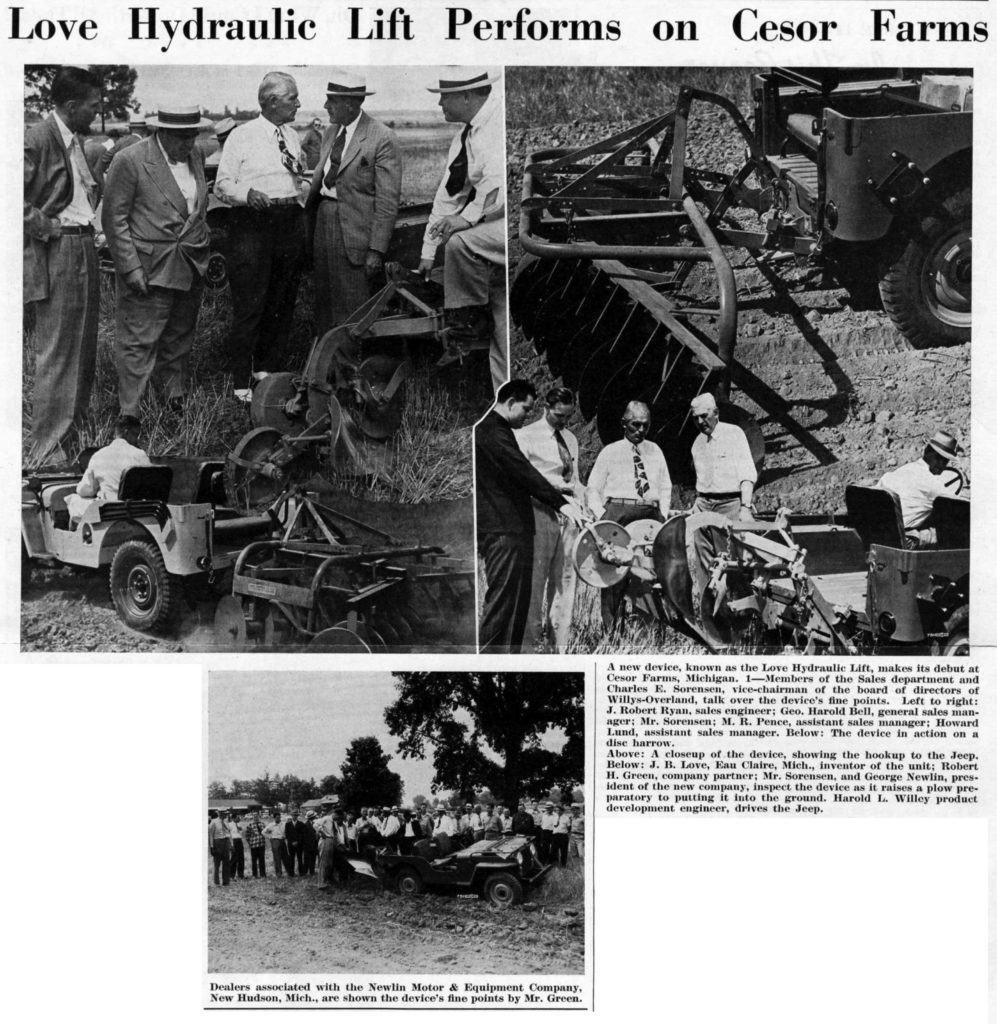
In September 1946, Sorensen and Love introduced the Love Hydraulic Implement Lift for the Jeep. Every CJ model from 1946 to 1970 could be equipped with a governor, a PTO, and a hydraulic implement lift capable of using Ford-Ferguson style 3-point implements to make it a light tractor. These parts could be added without modification to the Jeep and were available from the factory, the dealer, or field installed by the farmer. A lift made in 1946 would fit a 1966 CJ5 and a lift built in 1960 would fit a 1950 CJ3a. The hydraulic 3-point lifts designed for the Jeep were engineering marvels.
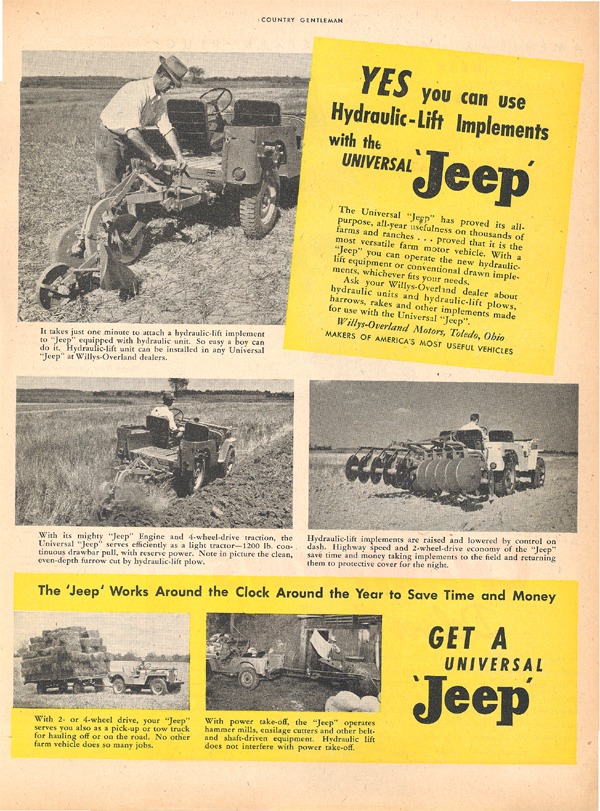
By 1947, Newgren Equipment Company was manufacturing their version of the Love lift. Willys continued to market the “Universal ‘Jeep'” as a light tractor, but also emphasized the other functions (mobile power unit, light truck and utility car) as well.
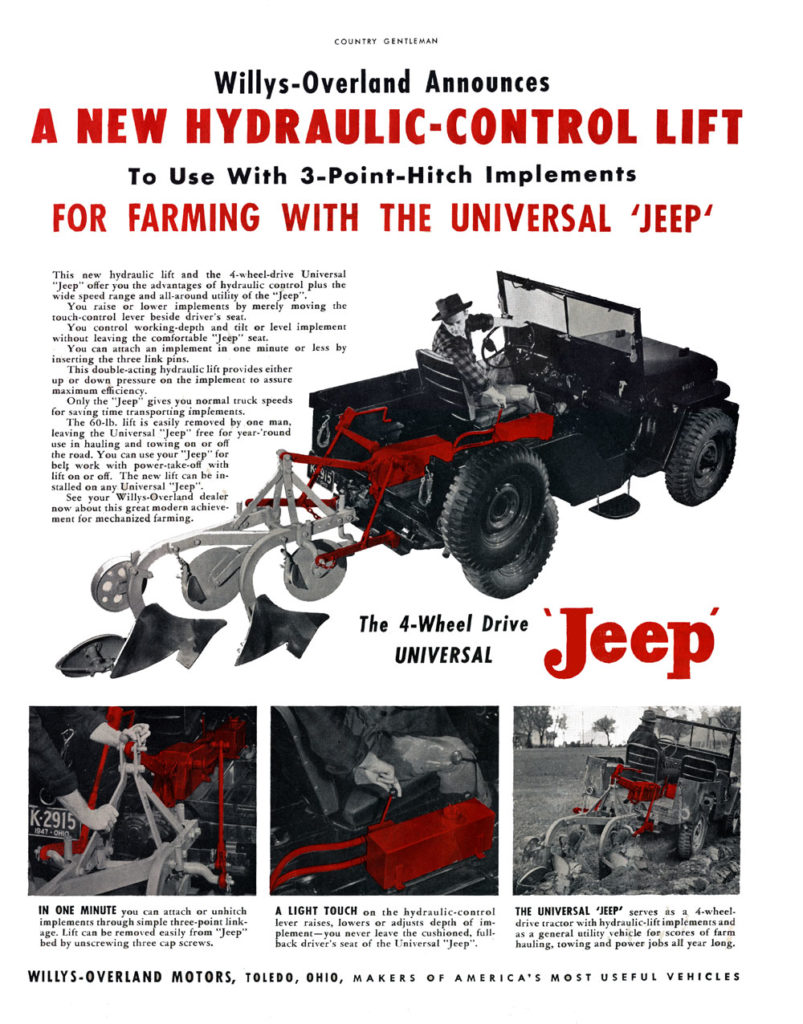
In 1948, Monroe Auto Equipment Company introduced its hydraulic lift and took control of Newgren Equipment. The design, which took away easy access to the bed, has been cited by some as a reason for declining sales. Monroe would defend the “in-bed design” because of its superior performance, especially when plowing, over the under-bed design of the Newgren. In a vigorous 1949 advertising campaign entitled “Revolution in Farming”, Monroe would promote the Jeep as an excellent light tractor.
Monroe, through a series of stock exchanges had sold Newgren, which had been switched from producing lifts to producing implements, to American-Bantam. Members of the Monroe’s executive staff became involved in Bantam’s day-to-day operations. By 1950, a Bantam stockholder suit against Monroe had resulted in the demise of Newgren and the bankruptcy of Bantam.
Disillusioned and nearly bankrupt, Monroe turned over all marketing and distribution of the lift and implements to Willys. Seventy years later, while researching the Monroe Lift, we ran into reluctance by some of those involved with Monroe at that time, to talk about this dark period of the company history. Although Monroe would continue to make lifts until sometime around 1956, we could find no production records or information about sales.
The Jeep Tractor
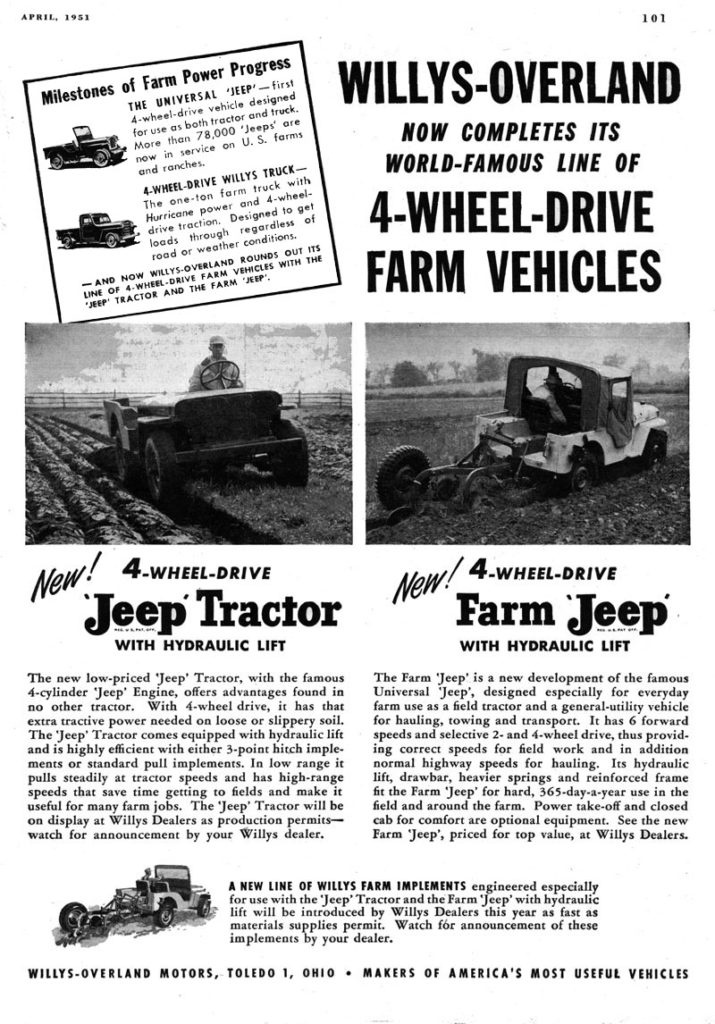
The CJ3a Information Page has a good history of the Jeep Tractor and the Farm Jeep model introduced in 1951, as does the CJ3a Page. No one seems to have uncovered the thinking behind the need for a “Jeep Tractor.” But it does appear that someone had been working on the idea before the 1951 release. In 2018 Dave @ eWillys posted this –Willys Production Story which contained the following picture, titled “Jeep Tractor for the Farm.”
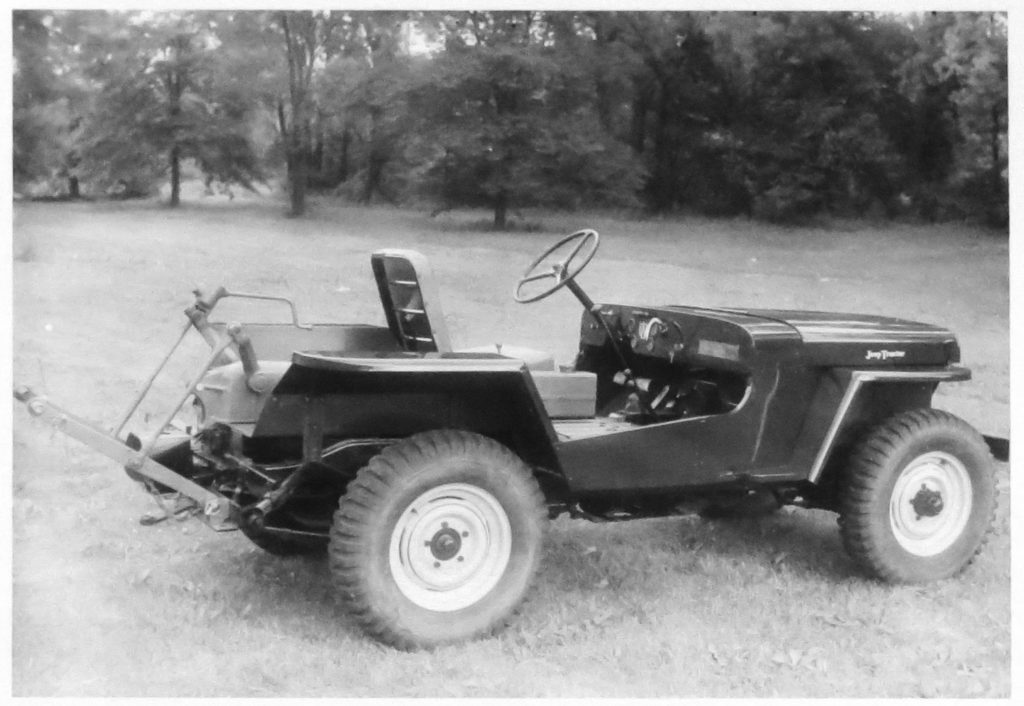
We sent the photo to Bob Westerman who replied “”Looks like they were trying to save money with the Jeep Tractor. The rear portion of the “body tub” has less metal than a regular tub and the rear fenders look like they are modified front fender stampings. It seems like they were hoping the farm market would take off. Hindsight shows the SUV market was far more profitable than the Farm market.”
We posted the picture on the CJ2apage forum and asked if anyone had additional information. Todd Paisley replied “This is a Willys-Overland prototype. The Jeep Tractor was built under Engineering Release 5475 “Pilot Model of Jeep Tractor – Build One sample” that started on 4/19/1949 and the project closed on 12/7/1949.”
So why did Willys believe that needed to produce a Jeep Tractor? According to an article by the Economic History Association, tractor production reached 564,000 units in 1951. While the Ford 9N, followed by the 8N. was the primary competition, a farmer in 1951 could choose among dozens of tractors. The big tractor producers (Deere, Ford, Massey-Ferguson, Case, Allis Chalmers, Oliver and Minneapolis Moline) held 98.8% of market share in the period of 1950-55. Willys would need to fight for even that 0.2% share against several other small, specialty tractor producers.
In 1949, Willys had taken the CJ3a to the Nebraska Test and done every well. Its numbers showed that it was well matched to the Ford 8N, having slightly higher ratings for belt and drawbar operations. Perhaps, buoyed by the results, which they proudly proclaimed in ads, someone thought they should offer a “real” tractor and not just a “part-time version.” Low production numbers might indicate that it was intended as a means to get the farmer in the door and then to “up-sell” him into buying the full “Farm Jeep” model.
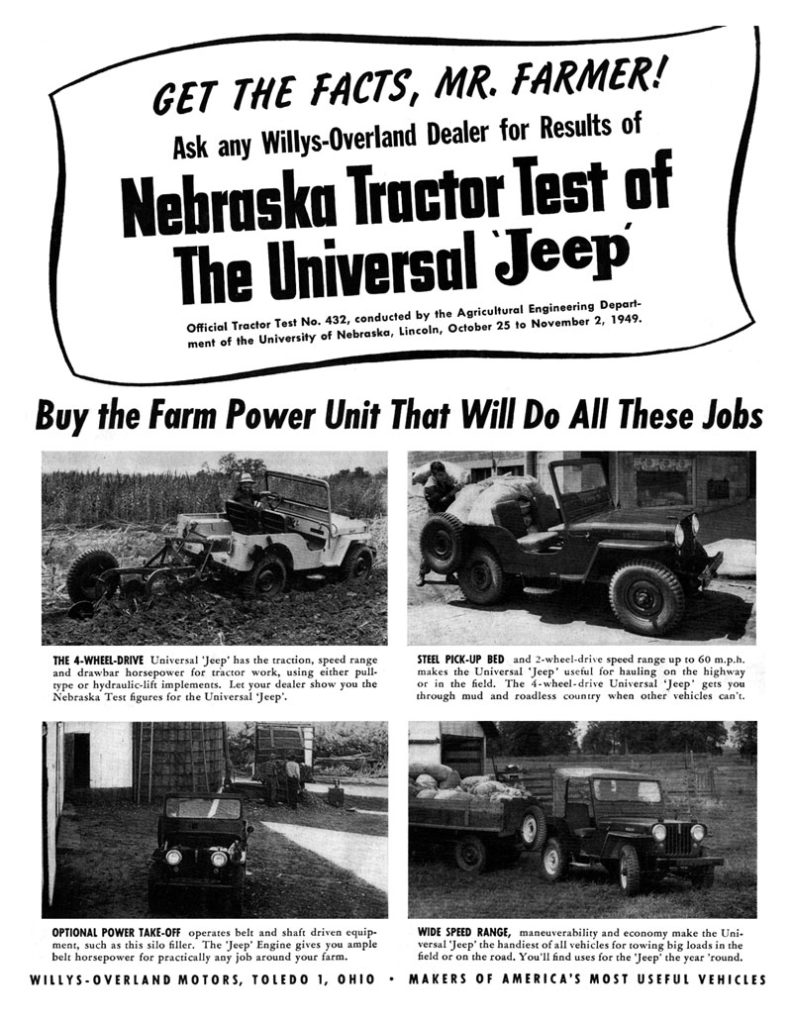
Beyond the brief 1951 campaign, Willys would never again focus solely on the light tractor theme. Instead, they would revert to the original planning document idea of a 4-in-1 farm machine. The primary use of the hydraulic lift went from plowing to being pictured as a machine for fencing, lifting/moving equipment, and grading work.
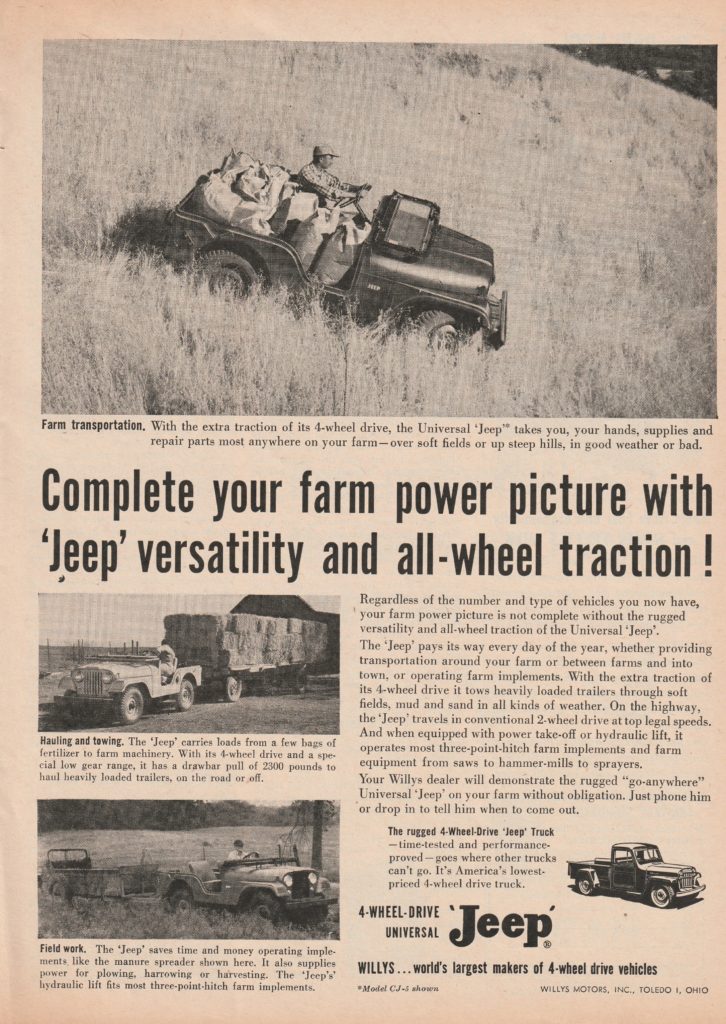
By 1956, “field work” was third behind transportation and hauling and towing. In the above ad, none of the Jeeps appear to have a hydraulic lift installed.
A final hydraulic lift for the Jeep was made by the Stratton Equipment Company of Cleveland, Ohio, and was in production from 1960 until the mid-1970s. The Farm Jeep era ended in 1970, when Jeep moved the gas tank from under the driver’s seat (where it had been located since the introduction of the military jeep) to under the bed of the CJ5 model. This move prevented the routing of the PTO shaft to the rear and the mounting of the hydraulic lift under the bed.
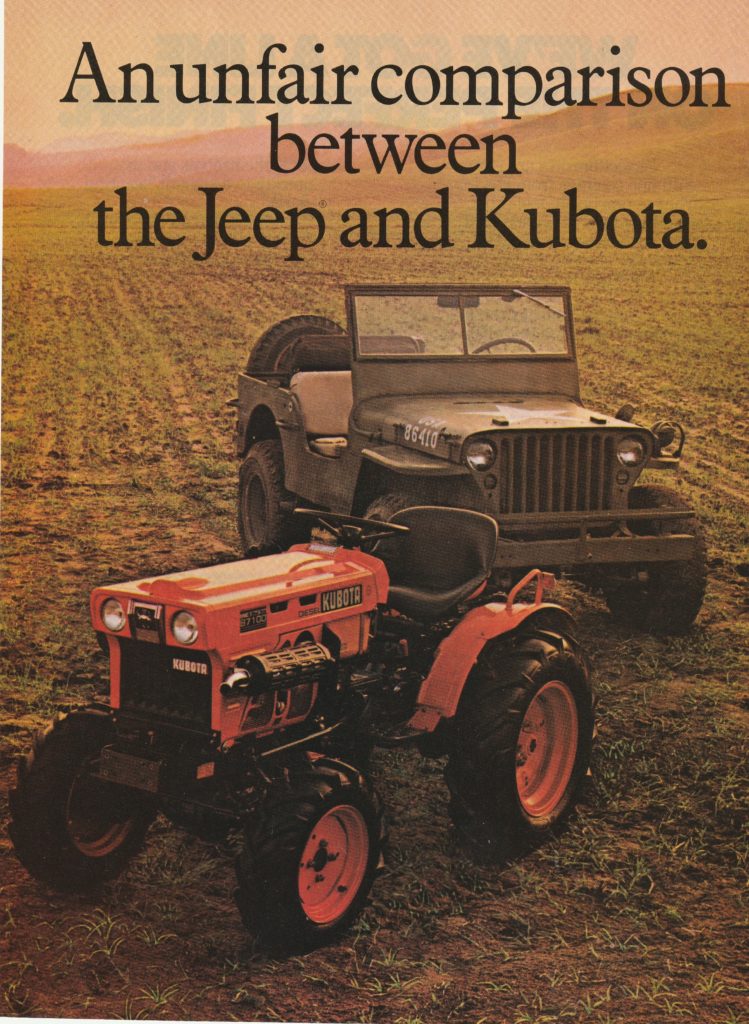
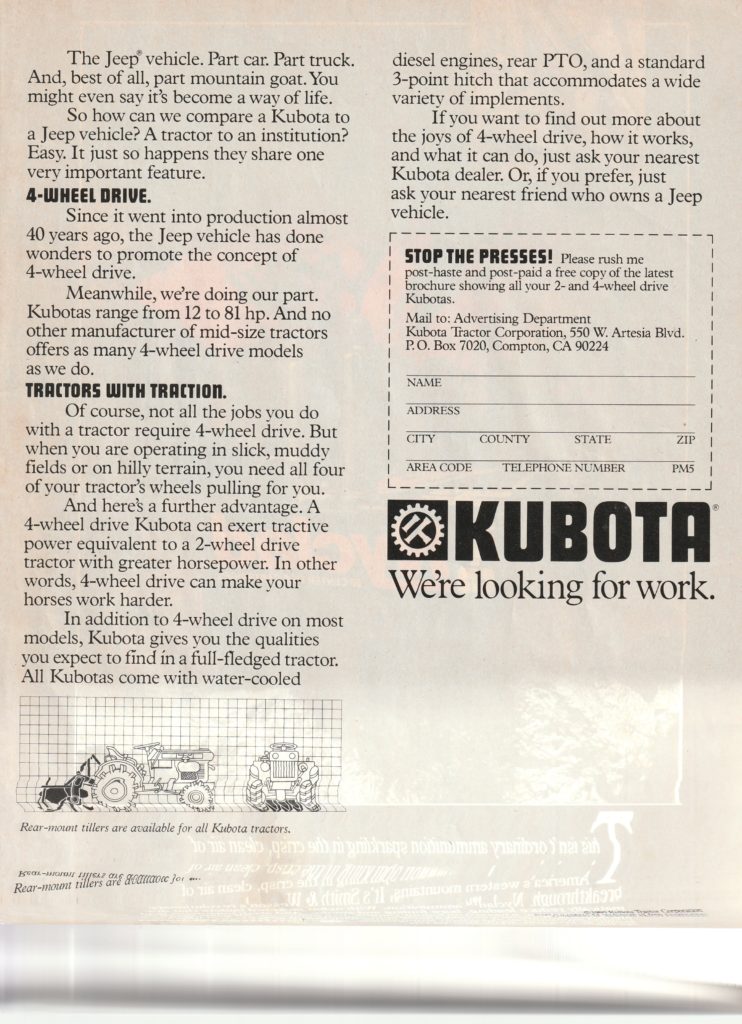
While sales of the Farm Jeep might have been small, it was the inspiration for a whole new generation of compact 4-wheel drive utility tractors (CUTs). In 1980, Kubota published an ad declaring “An unfair comparison to the Jeep.” The ad pointed out all the advantages of having Jeep’s traction combined in a tractor. Today we see more and more “side-by-side” utility vehicles (UTVs) that provide off-road capabilities combined with the ability to haul passengers and small loads. The Farm Jeep combined the CUTs and UTVs plus provided on-road capabilities. Perhaps it was simply ahead of its time.
